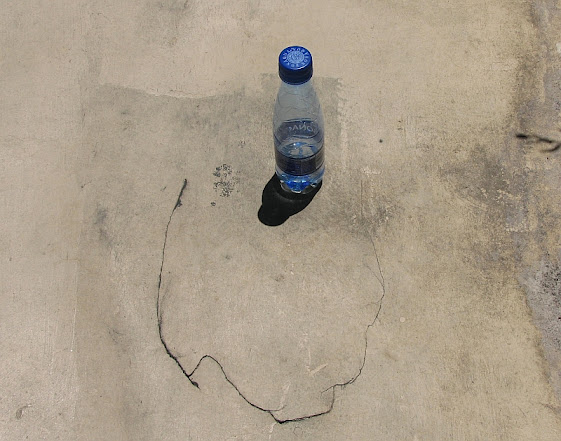My trip to South Africa was not a mammal trip - nor a birding trip - but a work-related conference trip. Still I was able to get out to the nature, primarily to birding, but I managed to see seven mammal species as well - and failed to see some that I had wished to see. I hope this report will give you some good hints, if you are traveling to Cape area.
6.12.2007
I saw the first mammal species already during my first day in Cape Town, when I walked from my hotel to Waterfront shopping area in harbor. There it was, the first Cape Fur Seal (Arctocephalus pusillus), fishing actively in the dock. Cool! And naturally a lifer for me, like all the mammals I saw in South Africa.
 |
| Cape Fur Seal (Arctocephalus pusillus), in Waterfront, Cape Town |
7.12.2007
Before the conference started, I had one free day and I went birding with BirdingPal Felicity Grundlingh, who has a great knowledge of whole nature in South Africa, not just about birds. One of the first birding hotspots we drove, was the Rondevlei nature reserve. The place is well known for the Hippos (Hippopotamus amphibius) living in the area, but I had no luck, I saw just the footprints, Hippo path and warning signs, that’s all, what a shame – and a good excuse to return to Africa someday.
 |
| Hippo crossing at Rondevlei – but where are they? |
 |
| Hippo footprint and 1/3 liter water bottle |
 |
| There they are hiding; the Hippo trail leads to reedbed |
Next to Cape of Good Hope at Cape Peninsula National Park, where the nature was totally different, reminded me somehow of the Lapland above Arctic Circle. No trees, windy and relatively cold, compared to warm, almost hot, inland. Not much birds in the area, but the mammals were really interesting! At first, we saw a big colony of Cape Fur Seals (Arctocephalus pusillus) in small islet out in the sea. Soon after that I noticed on the roadside two gorgeous antelopes, the Bonteboks (Damaliscus pygargus pygargus), subspecies which lives only in the peninsula area.
 |
| Cape Fur Seal (Arctocephalus pusillus) colony |
 |
| Bonteboks (Damaliscus pygargus pygargus) at Cape Peninsula National Park |
We drove still further south, towards the Cape of Good Hope. Soon I noticed something moving in flowering bush - another cool mammal but not an antelope. They were sitting in a big green tree pincushion and eating flowers; Chacma Baboons – also known as Cape Baboon (Papio ursinus ursinus). Wow!
 |
| Chackma Baboons (Papio ursinus ursinus), Atlantic Ocean in background |
No more mammals were found in Cape Peninsula – and we had still one birding hot spot ahead, so we turned around and started to drive towards Cape Town. On a highway I noticed few big antelopes behind the fence, Felicity told immediately they were Black Wildebeests (Connochaetes gnou). Shame that we could not park on highway, so no photo of those gorgeous animals. Our last target that day was the Kirstenbosch Botanical Garden. Wonderful place! Lot’s of birds but no visible mammals. Still, I made one indirect observation of certain mammal… It was the Common Mole-rat (Cryptomys hottentotus) and it was so close, but so far, somewhere under my feet. Still, I recommend visiting Kirstenbosch. Download the article “Mammals at Kirstenbosch” (as pdf) from here.
 |
| Common Mole-rat (Cryptomys hottentotus) was so close, but so far. No tick. |
11.12.2007
Conference was over, one more free day. Felicity and I headed to West Coast National Park, which locates north from Cape Town. Yet another wonderful place again. I was hoping to see some new mammal species and mother nature heard my wish. All three species we saw, were in the northern part of National Park, in the highest hills, where are the only granite formations in park. It was cool to see that small cousin of Elephants, the Rock Dassie aka Rock Hyrax (Procavia capensis). There were tens of them, they were curious and showed themselves really well. Other species, we saw there, were a small antelopes; male Steenbok (Raphicerus campestris) and Common Duiker (Sylvicapra grimmia). Steenbok reminded me of our Roe Deer in Europe.
 |
| Rock Dassies (Procavia capensis) were easy to spot |
 |
| And they were really curious |
 |
| Male Steenbok (Raphicerus campestris) |
 |
| Two Common (Sylvicapra grimmia), the last wild mammals I saw in South Africa |
-----------------------------------------------------------------------------------------------------------------------------
Writer
Olli Haukkovaara
Valkeakoski
Finland


I really miss South Africa, must come down there some day again...
ReplyDelete